Peony Sprout Growth Stages
Peony sprouts are perennial peony plants that are cherished for their spectacular blooms and toughness. Peony plants are a classic garden flower that can survive in various climates worldwide, and with the right care, a single peony plant can live for 100 years or more.
I have journeyed through the fascinating sprouting peony sprout growth stages, from seed germination to the development of stunning blooms.
Peony Sprout Growing Conditions
Peony sprouts are hardy plants that can thrive in USDA zones 3 to 9. The hardiness of peony plants can be influenced by various factors, including the specific variety of the peony plants and the peony growing conditions.
Peony perennials prefer full sun exposure, ideally receiving 6 to 8 hours of sunlight each day. They can manage with half a day of sun, but they bloom best in a sunny spot. The soil conditions for peony sprouts should be fertile, rich, and well-drained.
They can tolerate a range of soil types, including chalky or clay soils, but they do not thrive in heavy, soggy clay. If the soil is poor, consider growing your peony sprouts in a raised bed for maximum drainage.
Fertilization and nutritional care are also important for peony seedlings. While not essential, fertilizer can enhance the size and quantity of peony plant blooms. A light application of fertilizer in the spring, along with plenty of compost, can maintain soil quality.
For more information more about gardening you can visit: Garlic Growth Stages
Sprouting Peony Growth Stages
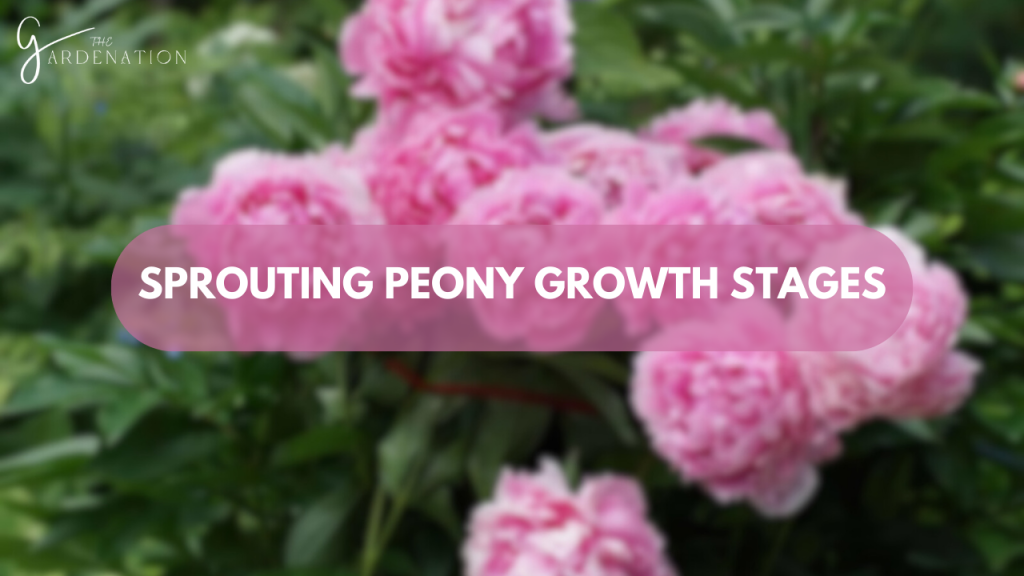
The life cycle of peony plants begins from the ground every year. During fall, the peony plant goes into dormancy, and the regrowth of the peony sprouts begins after the frost season.
1. Seed Germination:
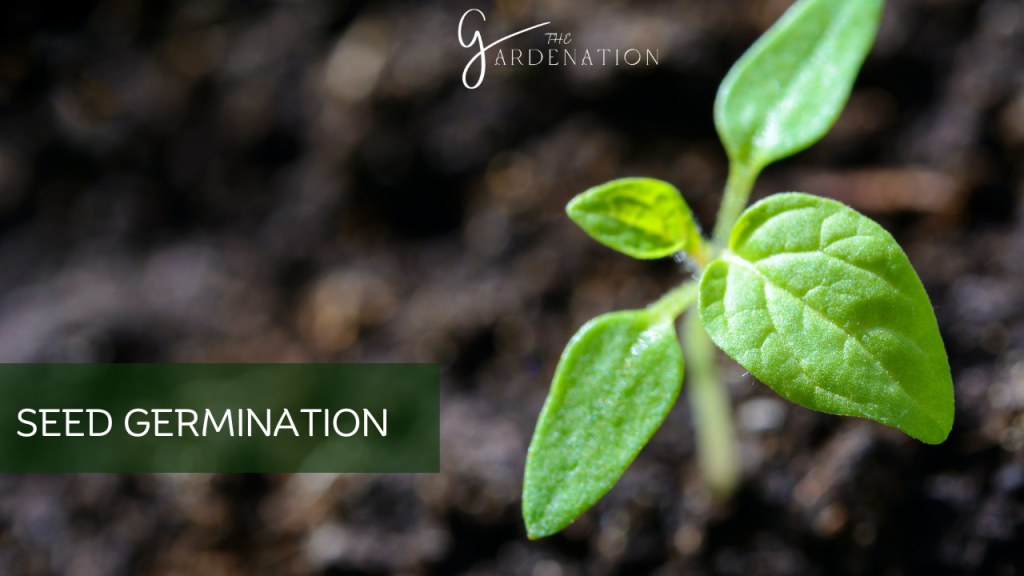
The first year of the peony growth cycle is when the shoots start growing after there is an increase in temperature. This period is marked by the shoots’ growth, a response to rising temperatures. Peony seeds have a unique dormancy requirement that involves a period of warm stratification followed by a period of cold stratification.
This process can be artificially induced through forced germination. Seed germination also takes place in Prickly Pear Cactus Growth Stages. Do Checkout!!
2. Peony Seedlings:
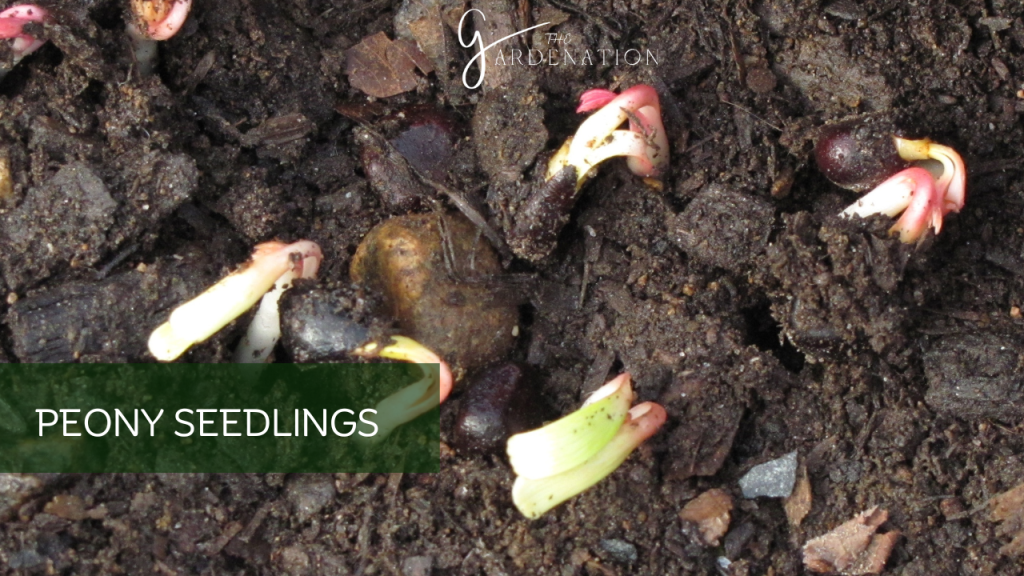
In this stage, the shoots start to emerge above ground, and the shoots slowly start to appear. Meanwhile, the baby leaves will remain folded. After germination, the seedlings need to be relocated to a suitable growing environment to ensure their continued growth
3. Root Development:
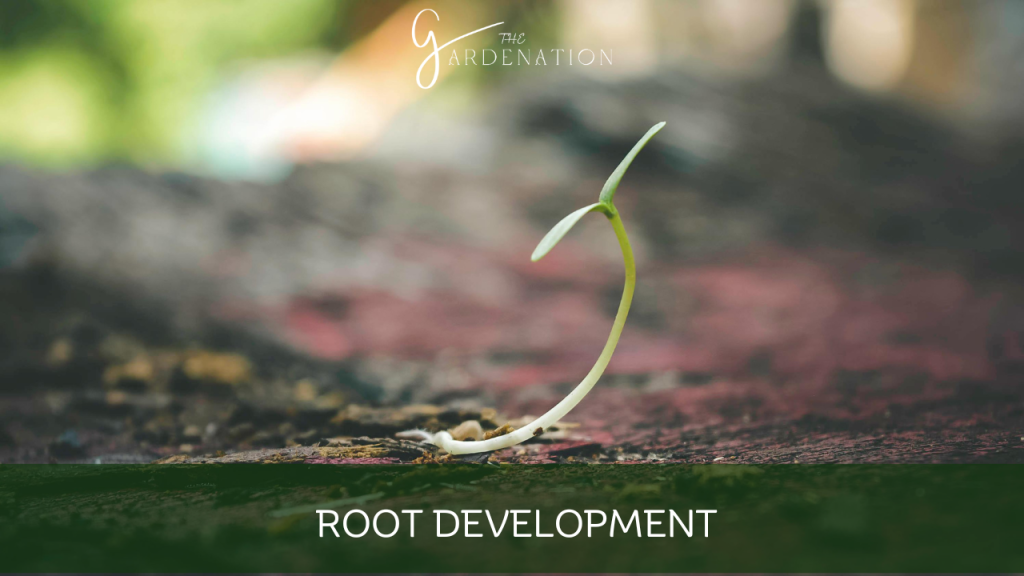
Peony plants have thick, tuberous root systems that develop close to the soil’s surface. A healthy root system sets the stage for future stem, leaf, and flower production. The development of this root system is crucial for the overall health and survival of the peony plant.
4. Vegetative Growth:
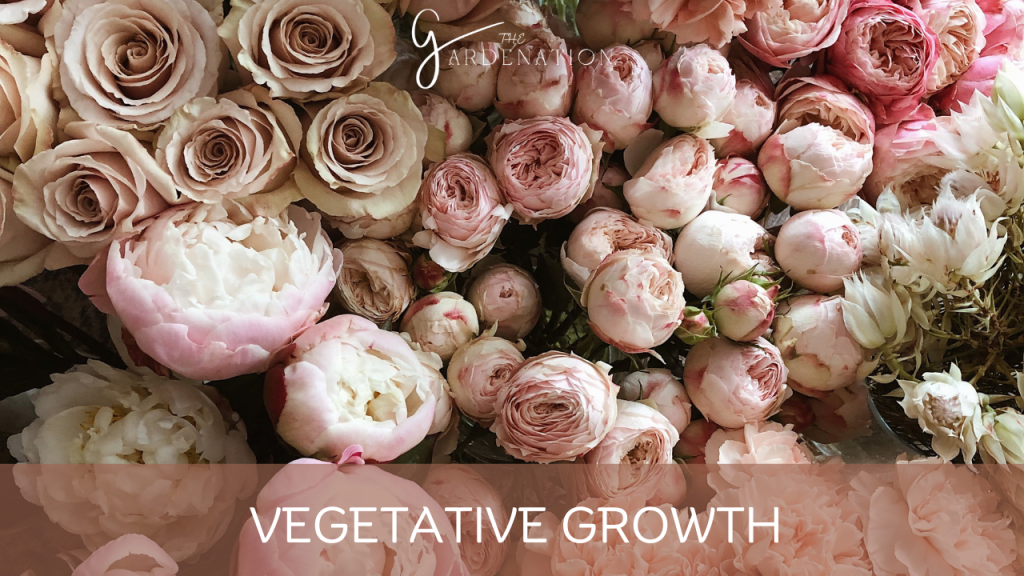
Herbaceous and Itoh peony sprouts produce brand-new vegetative growth every year in the spring. This growth begins as small shoots piercing through the soil. Managing vegetative growth, including dealing with common issues like powdery mildew, is essential for the health of the plant
Herbaceous peony varieties often need some extra support as they grow, particularly those with large, heavy flowers. Tomato cages are a practical solution to keep peony plants upright and looking neat.
Powdery mildew is a common issue for peony sprouts and can show up at any time when the plants are actively growing. Although it’s a widespread problem, it’s usually not harmful to the plants; it just doesn’t look very nice. To help control the spread of powdery mildew, I trim back the affected growth before the plants naturally die back for the season.
5. Bud Formation:
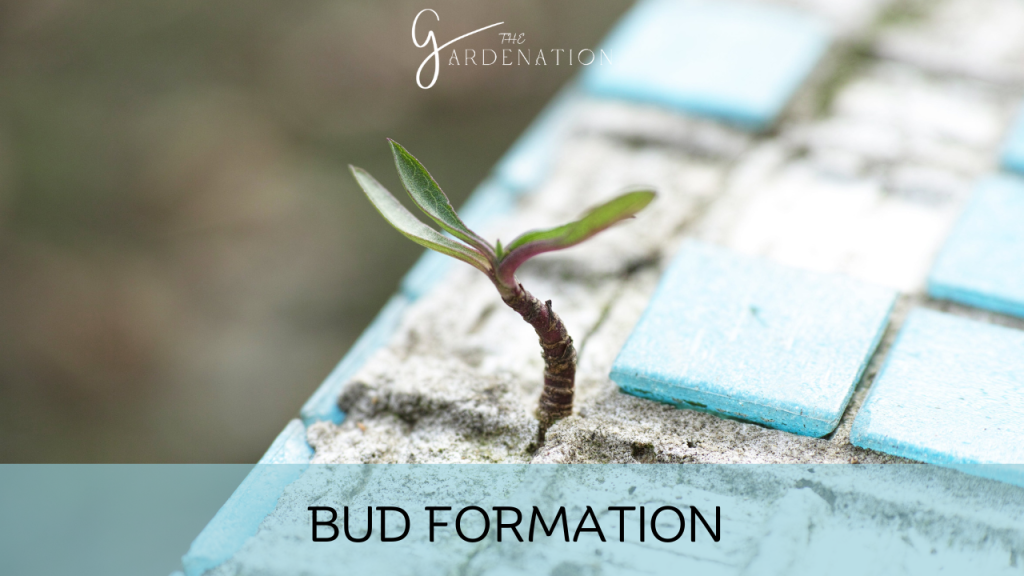
In this growing stage, the peony plants’ buds get significantly larger. The buds will develop to the size of a golf ball. The timing and appearance of flower buds vary depending on the peony variety. During this stage, ants are often seen on peony plants, attracted by the sugary substance secreted by the buds.
It’s not uncommon to see ants crawling on peony buds. This is because peony sprouts and ants have a beneficial relationship where both parties gain something.
Some people think that peony plants need ants to bloom, but this isn’t the case according to the University of Missouri. What actually happens is that the ants protect the peony sprout from other insects while they enjoy the nectar produced by the peony’s flower buds.
You should also give a look to the various growing stages of lemon here: Lemon Tree Growth Stages
6. Flowering:

The peony flowering season is when the bloom buds open. In general, herbaceous peony plants flower for seven to 10 days on average.The duration and timing of the blooming period can be influenced by factors such as sunlight, temperature, and the specific variety of peony. Pruning practices can help maintain a healthy and aesthetically pleasing plant
7. Pollination:
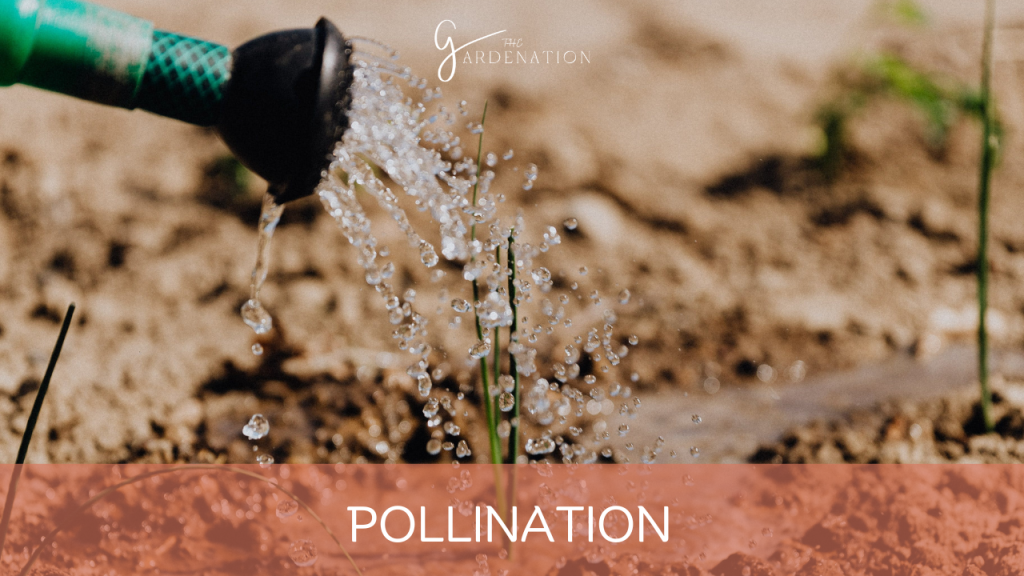
After flowering, the peony sprouts enter the pollination stage. Peony plant are self-fertile, but wind and insects also play a role in their pollination. Cross-pollination can contribute to genetic diversity
8. Seed Development:
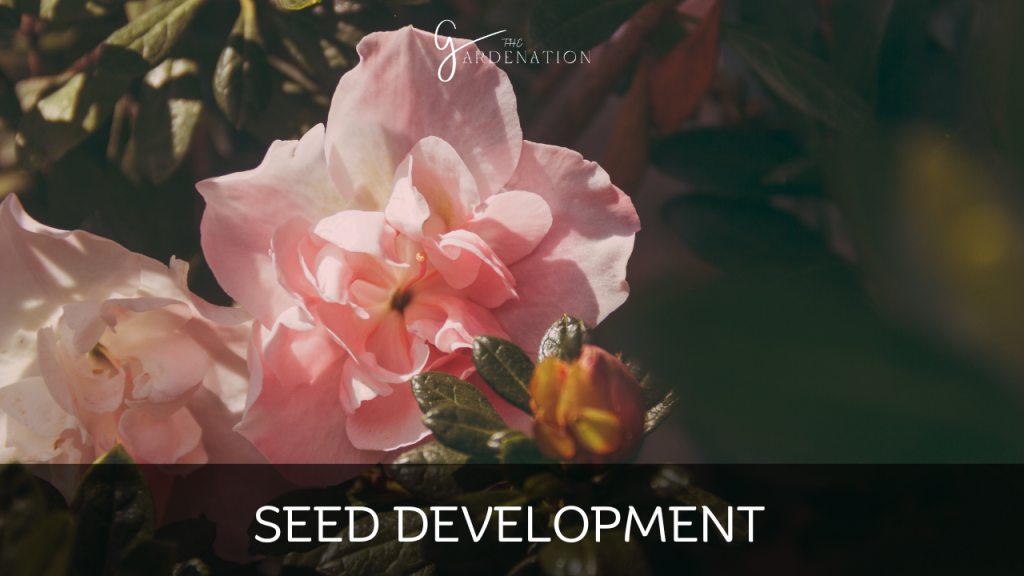
The final stage in propagating peony is seed development. The seeds mature within the seed pods. Harvesting seeds at the right time is crucial for ensuring their viability
Types of Peony Plants
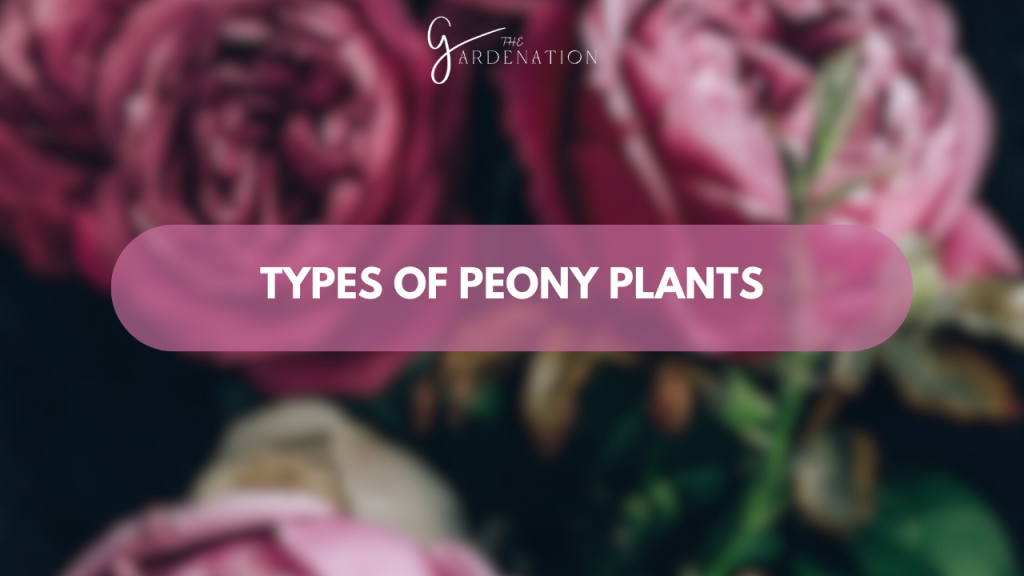
There are three main types of peony sprouts: herbaceous, tree, and Itoh peony plants.
Herbaceous Peonies:
These peony sprouts die back to the ground each winter and re-emerge in the spring. These are popular for their large, often fragrant flowers and strong stems, making them ideal for cutting. They typically stand about 2 to 3 feet tall.
Tree Peonies:
These are deciduous woody shrubs that bloom before herbaceous peony plants. They have some of the most extravagant flowers of all.
Itoh Peonies:
These are a hybrid of herbaceous and tree peonies. They require a chilling period to thrive and bloom, and their flowering window is much longer than that of herbaceous peonies.
Seasonal Considerations and Adaptations
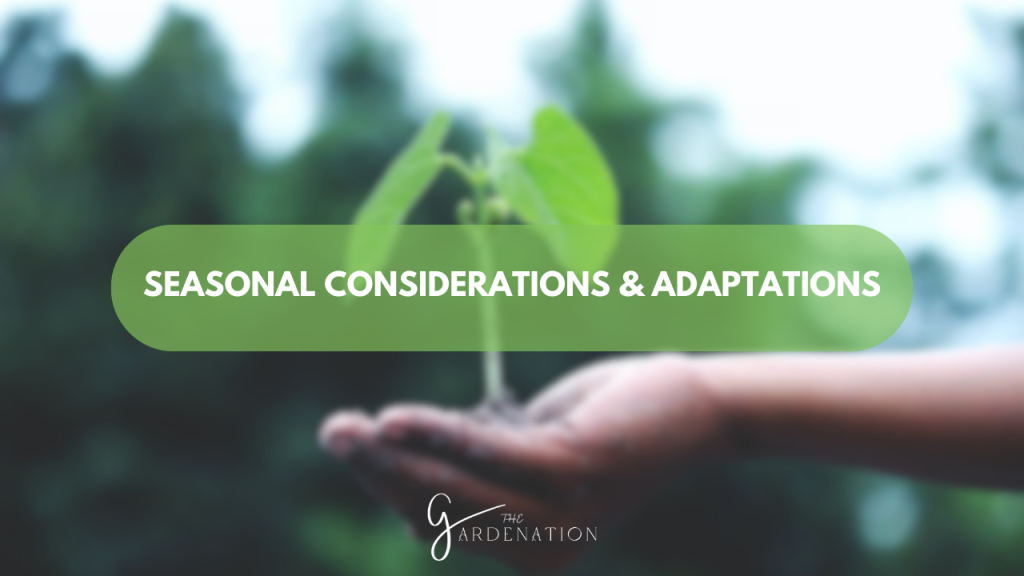
The growth and flowering seasons of peony plants are influenced by temperature. In general, peony sprouts flower at some point in spring, with different types of peony plants flowering at different times. Regional variations can also affect the timing of peony growth stages.
Peony sprout typically bloom in late spring to early summer, usually from April through June. However, the exact timing can vary depending on the specific variety of peony and the local climate. For instance, in warmer climates, early to mid-season varieties are recommended as late-season varieties may struggle with high temperatures.
Despite their beauty, peony plants have a relatively short flowering period, typically lasting around 7-10 days. However, by planting a mix of early, mid, and late-season blooming varieties, you can enjoy their stunning flowers for up to six weeks
Peony sprouts are adapted to freezing temperatures and are considered cold-climate growing perennials.
They need several hundred hours of near-freezing temperatures to set new growth and flower buds every year. Without these cold temperatures, the plants may decline and eventually die, even with the best of garden care in warm climate zones
Peony plants are also adapted to well-drained and often rocky soils, which is a characteristic of their original mountain habitats.
In areas with dense soils and high water tables, peony sprouts are often planted at ground level with a mound of soil placed on top for excellent drainage.
In terms of seasonal care, peony plants require a minimum of six hours of sunlight a day, or light afternoon shade in hotter climates. They prefer well-draining soil with a slightly acidic or neutral pH, and they should be planted in an area rich with organic matter.
Frequently Asked Questions
What Happens If You Don’t Cut Back Peony Sprouts?
If you neglect to cut back peony plants, it can lead to a buildup of dead plant material that can harbor diseases. It’s important to maintain garden hygiene to prevent disease.
How to care for peony plants before and after bloom?
Peony sprouts need plenty of space (3 to 4 feet apart) and should not be planted too deeply. If placed more than 2 inches below soil level, they may not flower often. Also, note that recently transplanted peony plants may take 2 to 5 years to develop their root systems to the point where they can flower.
What are the watering requirements for peony sprouts?
Peony plants require deep watering, especially during dry summer months. However, they are not overly thirsty plants and overwatering can lead to problems. There is no need to water once they have gone dormant.
How to prune peony sprouts?
Pruning peony plants involves removing dead or diseased parts of the plant, thinning out the stems to improve air circulation, and cutting back the plant in the fall once it has gone dormant. It’s important not to cut back peony sprouts until they are well established, as they are slow growing and every inch is precious.
How to deal with powdery mildew on peony plants?
Powdery mildew is a common fungal disease that can affect peony sprouts. It can be managed by improving air circulation around the plants, avoiding overhead watering, and applying a fungicide if necessary
Conclusion
Peony plants are perennial treasures that offer a stunning display of flowering each year. Understanding their life cycle, from seed germination to flowering, can help you successfully cultivate these plants. With the right care and conditions, you can nurture the timeless elegance of peony plants in your own garden.
In conclusion, peony sprouts are a wonderful addition to any garden, offering a burst of color in the spring and early summer. With the right care and consideration of their seasonal needs and adaptations, these plants can thrive and bring joy for many years.

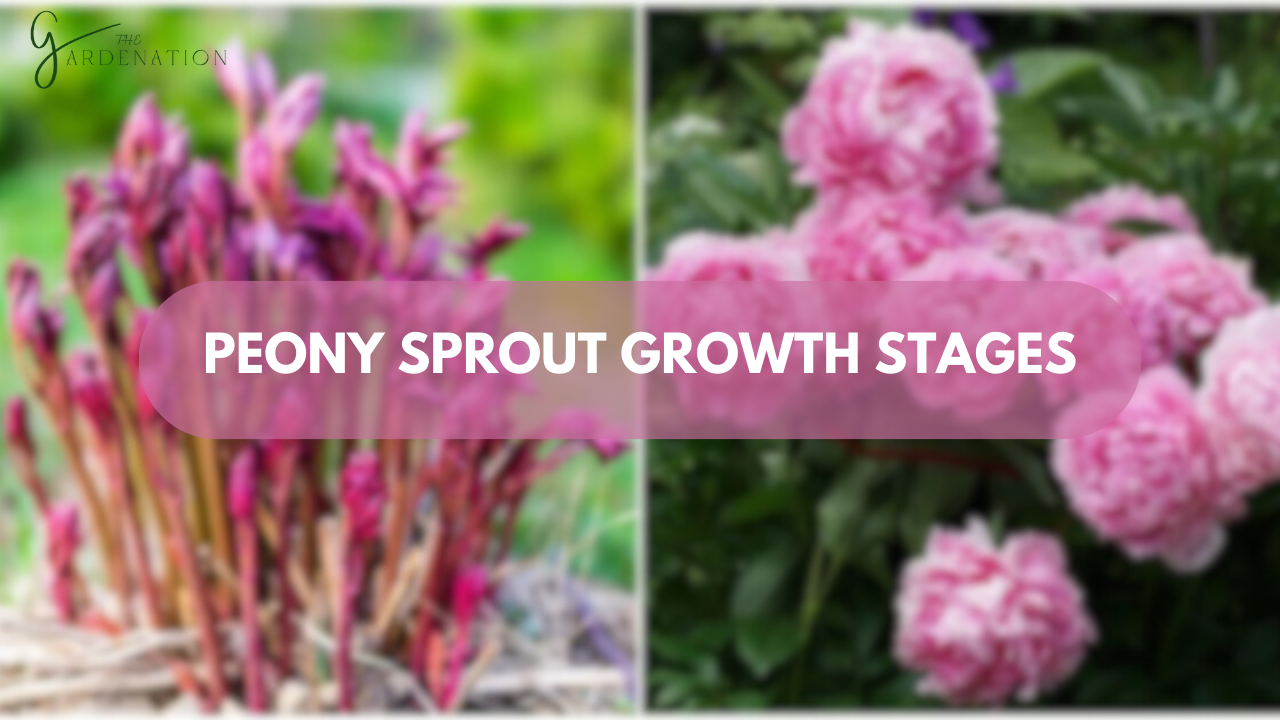
One Comment